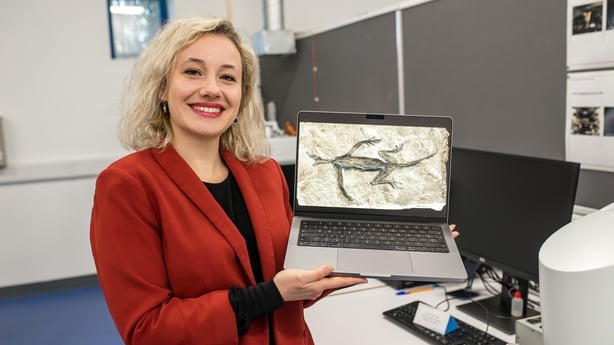Analysis: The discovery of the real story behind an ancient alpine fossil focuses attention on the serious problem of forgeries in palaeontology
A palaeontologist is like a detective investigating a crime scene that took place millions of years ago with no leads. This sounds like the ultimate blockbuster movie, but truth sometimes is stranger than fiction. This is the case of the enigmatic Tridentinosaurus antiquus, a small lizard-like animal that lived during the Permian, around 280 million-years-ago, in a lush ancient forest surrounded by active volcanos that today are part of the Alps.
Tridentinosaurus was discovered in 1931 and donated soon after to the palaeontological museum of the University of Padova. It was widely recognised as an important specimen for understanding the early evolution of reptiles and celebrated for its remarkable preservation. The body outline, appearing dark against the surrounding rock, was initially interpreted as preserved skin. The exceptionality of this discovery endured until today as no detailed analyses were carried out on the fossil.

In recent years, Tridentinosaurus has sparked new interest and prompted scientific research using sophisticated modern techniques. These studies focused on the remains of the skin aimed to reveal novel information about the biology of one of the most enigmatic fossil reptiles in the world.
The somewhat strange appearance of the fossil had puzzled experts for decades. It was unclear how the skin was preserved and why the bones were not directly visible on the surface of the rock. Was this like a mummy, with bones hidden beneath the layer of skin? Although the body looked complete, the head was missing. This is not strange per se as many fossilised animals are found often missing the skull (and/or other bones), but in this case, this missing part increased the level of challenge in reconstructing the true identity of the animal.
What was needed was a detailed analysis of the specimen using modern analytical techniques, and this is what we did in our study. Preliminary investigation using UV lamps revealed that the entirety of the specimen was treated with some sort of coating material. Coating fossils with varnishes and/or lacquers was the norm in the past and sometimes is still necessary to preserve a fossil specimen in museum cabinets and exhibits. We were hoping that the original soft tissues beneath the coating layer were still in good enough condition to extract meaningful palaeobiological information.

But the analysis of several microscopic soft tissue samples revealed a shocking truth: there was no trace of biological structures at the microscopic level. At the chemical level, the material matched the chemistry of a carbon-based manufactured pigment called "bone black", still produced today by the combustion of animal bones. These results clearly indicate that the skin is fake!
Tridentinosaurus is not entirely a hoax – some of the bones and tiny bony scales on its back are genuine - but the myth behind the specimen and its exceptional preservation is based on a lie. Our detailed analysis highlighted that the specimen was heavily prepared: scratch marks are well visible around the forelimbs and the abdomen. The carved body outline was then covered with a layer of paint, perhaps to embellish the specimen.
There are no records to show what happened between the discovery of the fossil and its donation to the museum. What we know is that the application of the black paint (whether intentionally or a genuine mistake) has misled experts into believing the skin was authentic, and in turn creating the impression that this specimen was uniquely preserved.
From Società Paleontologica Italiana, UCC researcher Valentina Rossi on the fascinating world of fossil molecules (in Italian)
Fossil forgeries are a serious problem in palaeontology, with specimens that pass undetected even to the most expert eyes ending up in scientific publications before they are identified. This can damage the reputation of the researchers and institutions involved, and can also generate misinformation.
In the history of palaeontology, forged fossils have been identified all over the world, often acquired by museums in historical times and only recently analysed with modern techniques. One famous case of fossil hoax is the "Piltdown man", an elaborate ruse involving human and ape bones that were carved and painted to resemble authentic fossil bones of a supposedly missing-link Homo species. In the case of the Archaeoraptor, a clever assemblage of several body parts of various dinosaurs was used to create a chimaera and described as a new species.
The root cause of making fake fossils is historically linked to both the illegal trade of fossils for monetary return and a desire for scientific or social recognition. Tridentinosaurus is another case where we have successfully identified and quantified the extent of the forgery thanks to modern and rigorous scientific methods. Although it might be impossible to stop forgers from making new fake fossils, reporting those that have been completely or partially forged can help others identify similar specimens in their collections and discourage such negative practices in the future.
Follow the RTÉ Brainstorm WhatsApp channel for all our stories and updates
The views expressed here are those of the author and do not represent or reflect the views of RTÉ



